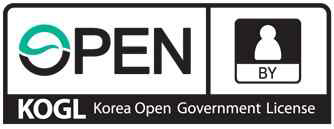Seoul Drum Festival (서울드럼페스티벌)
www.seouldrumfestival.com
- Tel
+82-2-537-7109
Seoul Drum Festival is a representative music festival in Seoul that has been held in spring since 1999. The festival features performances by Korean and international artists along with exhibition and experience booths to learn more about drums. Participants of all ages can joyfully experience percussion in person through hands-on activities.
- Address : 445 Yangneong-ro, Yongsan-gu, Seoul
※ Presentation Information
- Event Date
20240525 ~ 20240526
- Schedule
14:00-20:30
- Location
Nodeulseom Island
- Sponsor
Seoul Metropolitan Government
- Sponsor Phone
+82-2-537-7109
- Co-Sponsor Phone
+82-2-537-7109
- Fees
Free
- Introduction
Seoul Drum Festival is a representative music festival in Seoul that has been held in spring since 1999. The festival features performances by Korean and international artists along with exhibition and experience booths to learn more about drums. Participants of all ages can joyfully experience percussion in person through hands-on activities.
◎ Nearby Tourism Infobox
⊙ Nodeul Island (노들섬)
- Homepage
nodeul.org
Originally called Jungjido Island until the 1950s, Nodeul Island was a sandy plain used for recreational purposes until the areas of Hangang River underwent development in the '60s and '70s. The sand was used to create what seems like an island floating in the middle of the Hangang River. Nodeu Island was left abandoned for the next 50 years until 2005, when the Seoul Metropolitan Government purchased the property. After a series of planning and changes, the island was open to the public in 2019 as a recreational area while preserving most of its original form. Nodeul Isand's main attractions consist of a live house (concert hall), bookstore, lounge, restaurants, and more, serving as a cultural entertainment spot to the public.
⊙ Ogeunnae Dakgalbi (오근내닭갈비)
- Homepage
ogeunnae.modoo.at/ (Korean only)
- Tel
+82-2-797-0131
Ogeunnae, the old name for Chuncheon, features Chuncheon-style dakgalbi (spicy stir-fried chicken) using only fresh leg meat of chickens which give a soft and elastic texture.
⊙ Saenamteo Catholic Holy Place of the Martyrs (새남터기념성당)
- Homepage
www.saenamteo.or.kr (Korean, English)
- Tel
+82-2-716-1791
When taking the subway from Seoul Station to Yongsan Station, you will notice a tall and distinct hanok (traditional Korean architecture) building; this is Saenamteo Catholic Holy Place of the Martyrs. Construction of the building began in 1984, the year of the 200th anniversary of Catholicism in Korea, and was completed after three years.
Also called "Nodeul" and "Sanamgi," Saenamteo was used as a military training ground during the early Joseon period. It was also the place
where convicted felons and the Sayuksin (the six martyred ministers) were executed.
Many Catholics were executed here during the Sinyu Persecution of 1801, the Gihae Persecution of 1839, the Byeongo Persecution of 1846, and the Byeongin Persecution of 1866. Among those executed were 11 priests including the first Korean priest Kim Taegon (Andrew), the first Chinese priest that came to Korea Ju Mun Mo (Jacobus), the first French priest that came to Korea Bishop
Imbert and other Catholics including Hyeon Seok-mun. There is also an altar here where the remains of nine Catholic saints are enshrined.
⊙ Hyosajeong Pavilion (효사정)
- Homepage
tour.dongjak.go.kr
- Tel
+82-2-820-9848
Hyosajeong Pavilion is where Nohan, the second vice premier of the Joseon dynasty during King Sejong and King Sejo’s reign, stayed. After he lost his mother, he built the pavilion to mourn at her grave while still being able to see his father’s grave in Gaeseong to the North. His brother-in-law, then Minister of the Interior, Gang Sa-deok named the pavilion “Hyosajeong,” which means pavilion of filial piety.
In order to find the original location of the pavilion, poems by Jeong Inji and Seo Geojeong and an old map of Korea were referenced, but the pavilion was not found because the surrounding landscape had changed too much. As a result, a location was selected and the pavilion was reconstructed at its current location. The house is 3 kan* in the front and 2 kan* on the side. The roof is a hip-and-gable roof. The pavilion has one room with under floor heating and a railing around the pavilion
(* kan: a traditional measurement that corresponds to the space between two columns)
⊙ Gimbap Nara (김밥나라)
- Tel
+82-2-796-1439
This Korean cuisine is located near Yongsan Station, Seoul. The representative menu is gimbap. You can eat a variety of Korean dishes served fast without hurting your wallet.
⊙ Teobangnae (터방내)
- Tel
+82-2-813-4434
It is an old store that opened in 1983. This cafe is located in Dongjak-gu, Seoul. The representative menu is coffee.
⊙ Ichon Hangang Park (이촌한강공원)
- Homepage
hangang.seoul.go.kr
- Tel
+82-2-3780-0551
Ichon Hangang Park is built along the Hangang Park in Yongsan. From the park, one can see the Hangang River up close, and one can also find sports facilities like soccer fields, jokgu fields, inline skating rink, water sports facilities, bicycle paths, as well as a nature learning center built around a restored wetland and a lawn. One can follow the Hangangdaegyo Bridge to enter into the Nodeulseom Island, an island in the middle of the river.
 This work was created by the Korea Tourism Organization for 24 years and opened as the first type of public Nuri. You can download it for free from the Korea Tourism Organization, https://kto.visitkorea.or.kr/eng.kto
This work was created by the Korea Tourism Organization for 24 years and opened as the first type of public Nuri. You can download it for free from the Korea Tourism Organization, https://kto.visitkorea.or.kr/eng.kto
No comments:
Post a Comment